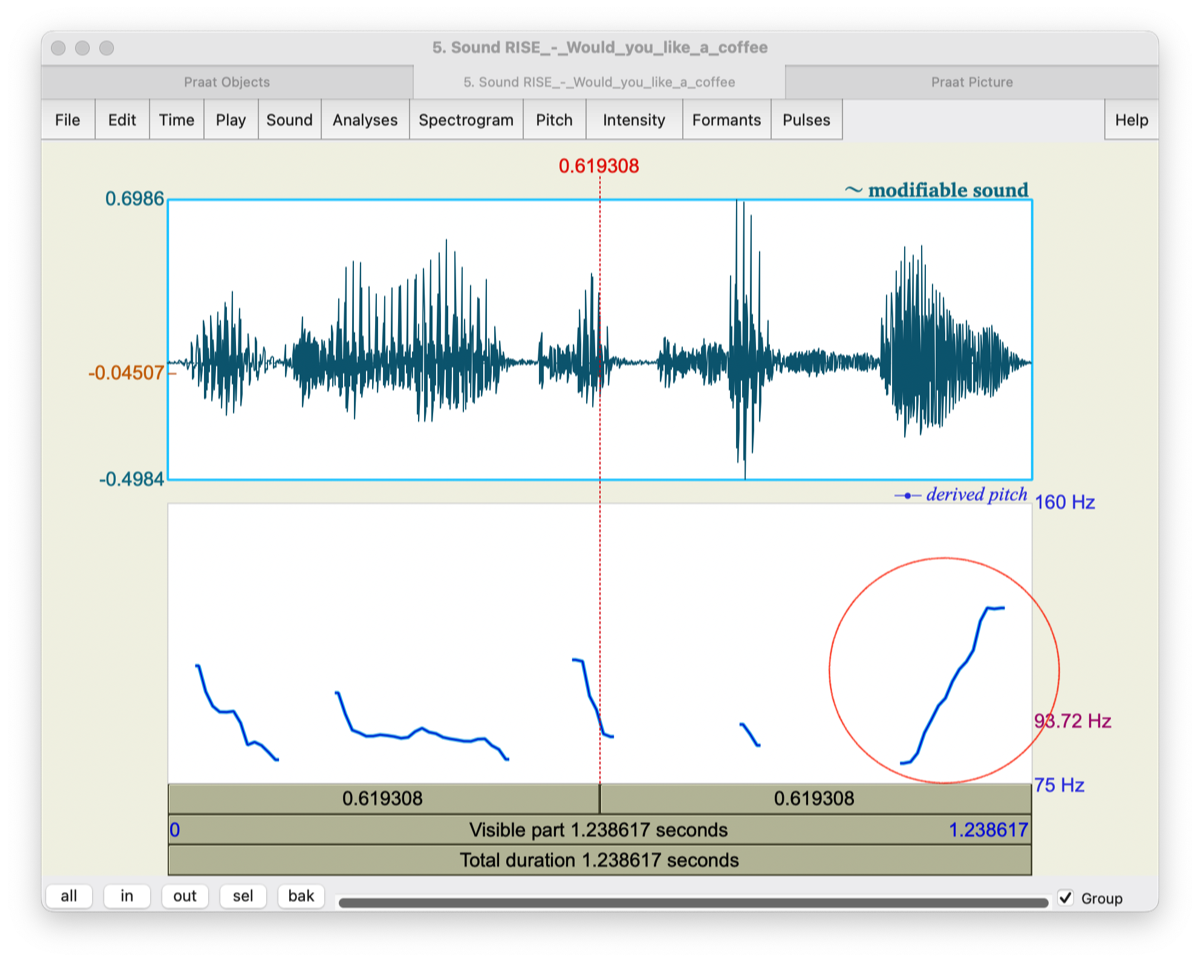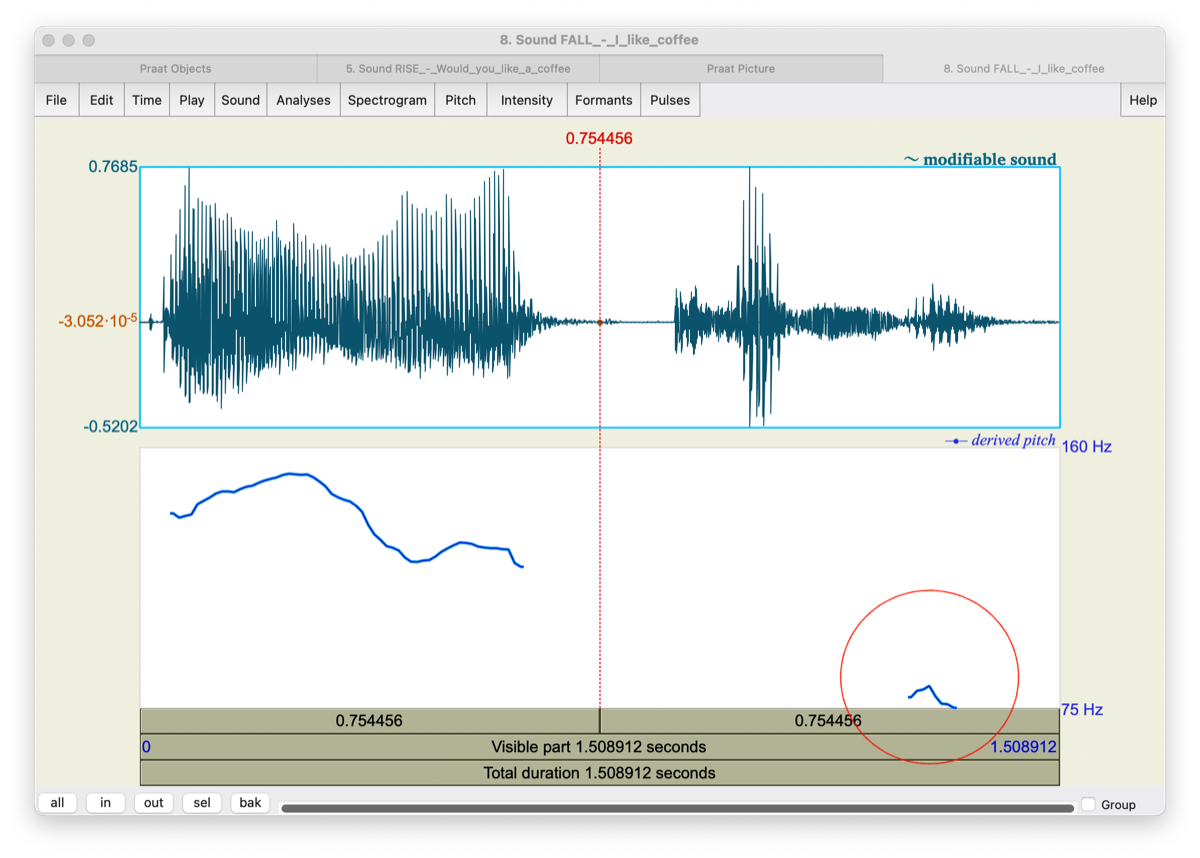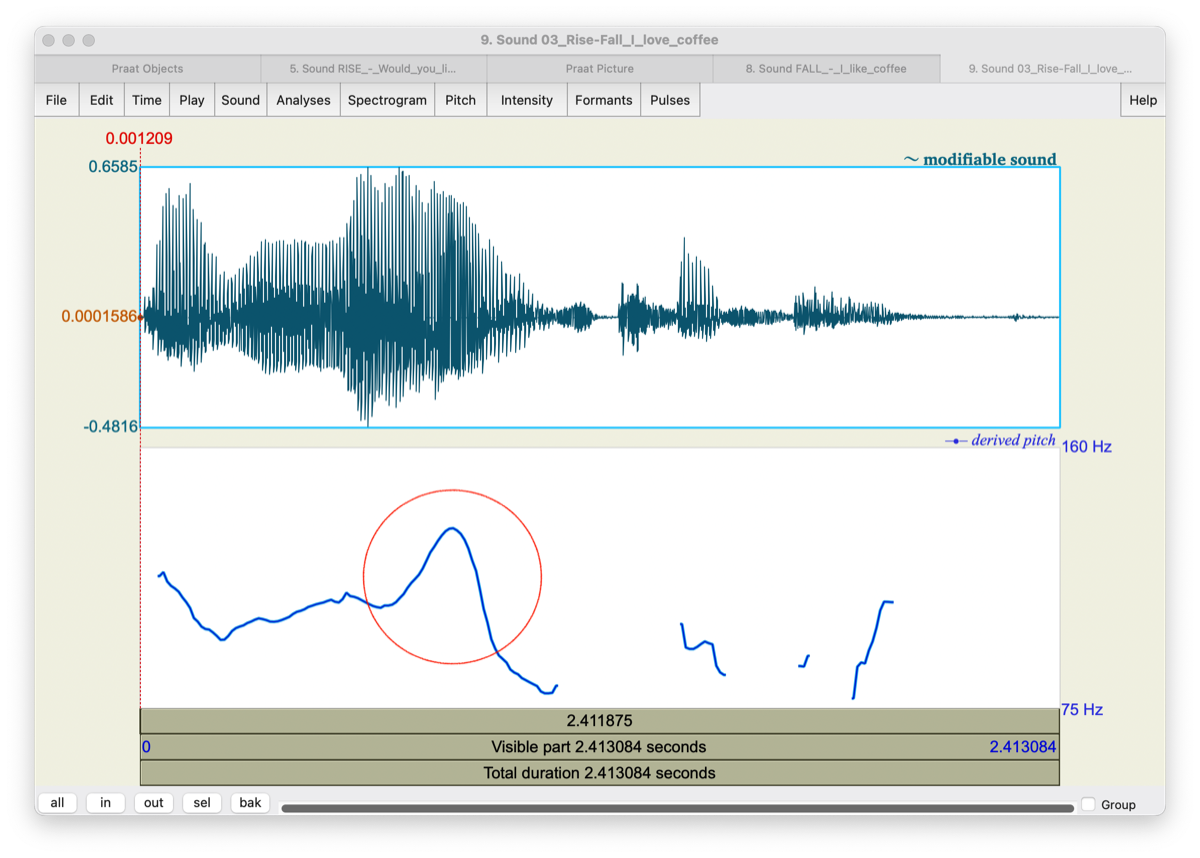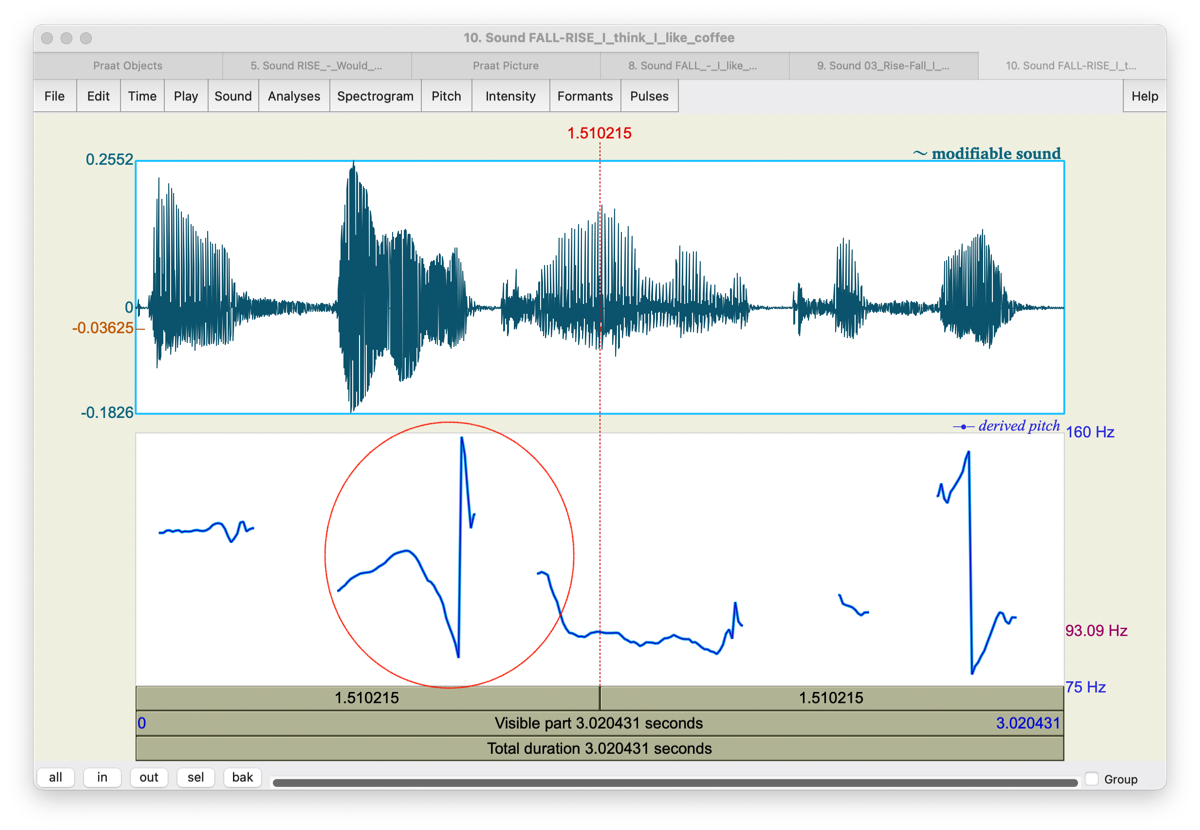Suprasegmental aspects
Utterance intonation
Intonation
Intonation is a variation in vocal pitch across a spoken utterance that add meaning, nuance or emphasis. Intonation changes occur naturally throughout a spoken utterance. However, the most dramatic or significant change occurs on one syllable called the nucleus or tonic syllable.
The four basic English intonation patterns are:
The change in intonation is transcribed by adding an arrow or arrows immediately before the nucleus (or tonic syllable) where the change in vocal pitch takes place.
The four basic English intonation patterns are:
- ➚ RISE - pitch increases, signalling a question, doubt or uncertainty.
- ➘ FALL - pitch decreases, signalling a statement, command or certainty, or highlighting or correcting the last speaker.
- ➚➘ RISE-FALL - pitch increases and then decreases, certainty, exclamation or sarcasm/humour
- ➘➚ FALL-RISE - pitch decreases then increases, signalling doubt or uncertainty.
The change in intonation is transcribed by adding an arrow or arrows immediately before the nucleus (or tonic syllable) where the change in vocal pitch takes place.
Clinical applications
Since intonation is produced by changes in vocal pitch across an utterance, clients who have conditions which affect vocal pitch control, or the ability to support phonation may benefit from intonation, breathing and vocal exercises and feedback. These include:
- Dysarthria caused by:
- Congential conditions such as Cerebral Palsy and Down's syndrome
- Acquired conditions such as Cerebrovascular Accident (CVA, or 'stroke'), Severe Head Injury or Brain tumours
- Progressive conditions such as Parkinson's Disease, Motor Neurone Disease (MND) and Multiple Sclerosis
- See the NHS page on Dysarthria.
Dysphonia (voice disorder)
Trans and non-binary people (Non-clinical group)
- Trans and non-binary people who wish to use an authentic voice and communication style that matches their gender. Since being trans is not a disorder, this population is a non-clinical group and individuals may or may not wish to change their voice, including intonation.
- Note that neurodivergent service users may use a different intention pattern / range and that flat or different intonation styles. A service user with different intonation should not necessarily be offered treatment unless requested specifically by the service user.
01. RISE

'Would you like a coffee?'
/ wʊd͡ʒ jə laɪk ə ˈkɒ.↗︎fi /
01. RISE - Note the steep rise in pitch on the second syllable of 'coffee' (circled in red, above).
This indicates a question.
This indicates a question.
02. FALL

'I like coffee'
/ aɪ laɪk ˈkɒ.↘︎fi /
02. FALL - Note the much lower pitch on the second syllable of 'coffee' (circled in red, above) compared with the start of the utterance.
This indicates a statement, or emphasis.
This indicates a statement, or emphasis.
03. RISE-FALL

'I love coffee'
/ aɪ ↗︎↘︎lʊv ˈkɒ.fi /
03. RISE-FALL - Note the 'hump' in pitch on the word 'love' (circled in red, above), comprised of a rise and then a fall in pitch.
This indicates a sarcasm, insincerity or humour.
This indicates a sarcasm, insincerity or humour.
04. FALL-RISE

'I think I like coffee'
/ aɪ ↘︎↗︎θɪŋk aɪ laɪk̚ ˈkɒ.fi /
04. FALL-RISE - Note the 'valley' in pitch on the word 'think' (circled in red, above), comprised of a fall and then a rise in pitch.
This indicates a doubt or uncertainty.
This indicates a doubt or uncertainty.
Further reading
Carr, P. (20). English Intonation. In P. Carr, English Phonetics and Phonology, An Introduction (3rd ed., 109-128, Wiley Blackwell. https://www.wiley.com/en-gb/English+Phonetics+and+Phonology%3A+An+Introduction%2C+3rd+Edition-p-9781119533771
Cruttenden, A. (2012). Intonation. Cambridge University Press. https://doi-org.manchester.idm.oclc.org/10.1017/CBO9781139166973
Kuschmann, A., Miller, N., Lowit, A., & Pennington, L. (2017). Intonation patterns in older children with cerebral palsy before and after speech intervention. International Journal of Speech-Language Pathology, 19(4), 370-380. https://doi.org/10.1080/17549507.2016.1216601
Pausewang Gelfer, M., Pickering, J. And Mordaunt, M. (2019). Pitch and intonation. In R.K. Adler, S. Hirsch, & J. Pickering (Eds.), Voice and Communication Therapy for the Transgender/Gender Diverse Client: A Comprehensive Clinical Guide, (3rd ed.). https://www.pluralpublishing.com/publications/voice-and-communication-therapy-for-the-transgendergender-diverse-client-a-comprehensive-clinical-guide
Pert, S. (1995). An Evaluation of the Robertson Dysarthria Profile (Revised) with reference to Cerebral Vascular Accident, Head Injury and Motor Neurone Disease. Manchester Metropolitan University. https://www.speechtherapy.co.uk/resources/PDFs/1995SPertDissertation.pdf